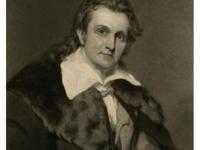Haiti
April 26 marks the birthday of wildlife artist John J. Audubon. At an early age, Audubon took an interest in nature, particularly birds. He was born in Saint-Domingue (now Haiti) on his father’s sugar plantation and spent most of his childhood in Nantes, France, raised by his stepmother. At age 18, Audubon was sent to the United States to his family’s farm, “Mill Grove,” in Pennsylvania. Located on the Perkiomen Creek outside of Valley Forge, Audubon lived on the farm for only a few years, but the experience allowed him to explore nature in depth, more fully develop his understanding of birds, and learn taxidermy. Also while in Pennsylvania, Audubon met his future wife, Lucy Bakewell, the daughter of neighbor William Bakewell.
Today, “Mill Grove” is located in Audubon, Pennsylvania, and the farm house serves as the site of the John James Audubon Center. Audubon began studying the nation’s birds in the late 1800s. His study led to the creation of his seminal work Birds of America. The first plates of this book were printed in 1827. Audubon’s final work, Viviparous Quadrupeds of North America, was published in 1848.
HSP’s holds a copy of Audubon’s Viviparous Quadrupeds of North America (1848) in three volumes (Collection 3198), and our library contains published works on Audubon’s life and work, including Audubon the Naturalist: a history of his life and time, by Francis Hobart Herrick (call number Ga .9905) and John James Audubon, by Alice Ford (call number Ga .9921 F75). Audubon’s Birds of America can be found at the Library Company of Philadelphia.

